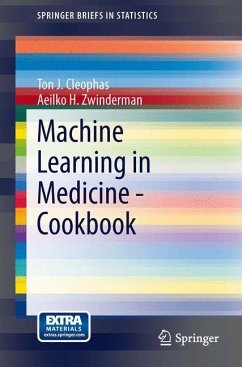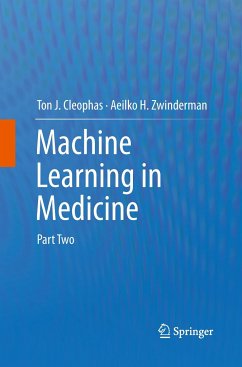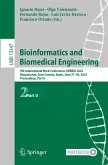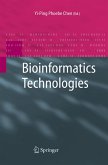The amount of data in medical databases doubles every 20 months, and physicians are at a loss to analyze them. Also, traditional methods of data analysis have difficulty to identify outliers and patterns in big data and data with multiple exposure / outcome variables and analysis-rules for surveys and questionnaires, currently common methods of data collection, are, essentially, missing.
Obviously, it is time that medical and health professionals mastered their reluctance to use machine learning and the current 100 page cookbook should be helpful to that aim. It covers in a condensed form the subjects reviewed in the 750 page three volume textbook by the same authors, entitled "Machine Learning in Medicine I-III" (ed. by Springer, Heidelberg, Germany, 2013) and was written as a hand-hold presentation and must-read publication. It was written not only to investigators and students in the fields, but also to jaded clinicians new to the methods and lacking time to read the entire textbooks.
General purposes and scientific questions of the methods are only briefly mentioned, but full attention is given to the technical details. The two authors, a statistician and current president of the International Association of Biostatistics and a clinician and past-president of the American College of Angiology, provide plenty of step-by-step analyses from their own research and data files for self-assessment are available at extras.springer.com.
From their experience the authors demonstrate that machine learning performs sometimes better than traditional statistics does. Machine learning may have little options for adjusting confounding and interaction, but you can add propensity scores and interaction variables to almost any machine learning method.
Obviously, it is time that medical and health professionals mastered their reluctance to use machine learning and the current 100 page cookbook should be helpful to that aim. It covers in a condensed form the subjects reviewed in the 750 page three volume textbook by the same authors, entitled "Machine Learning in Medicine I-III" (ed. by Springer, Heidelberg, Germany, 2013) and was written as a hand-hold presentation and must-read publication. It was written not only to investigators and students in the fields, but also to jaded clinicians new to the methods and lacking time to read the entire textbooks.
General purposes and scientific questions of the methods are only briefly mentioned, but full attention is given to the technical details. The two authors, a statistician and current president of the International Association of Biostatistics and a clinician and past-president of the American College of Angiology, provide plenty of step-by-step analyses from their own research and data files for self-assessment are available at extras.springer.com.
From their experience the authors demonstrate that machine learning performs sometimes better than traditional statistics does. Machine learning may have little options for adjusting confounding and interaction, but you can add propensity scores and interaction variables to almost any machine learning method.
From the reviews:
"This is a concise, instructive and practical text on the various models of machine learning with particular reference to their applicability in medicine. ... The book is primarily aimed at students, health professionals and researchers with basic experience in statistics who are looking for a quick review prior to using machine learning tools. ... This book is a valuable resource for those who need a quick reference for machine learning models in medicine." (Kamesh Sivagnanam, Doody's Book Reviews, April, 2014)
"This is a concise, instructive and practical text on the various models of machine learning with particular reference to their applicability in medicine. ... The book is primarily aimed at students, health professionals and researchers with basic experience in statistics who are looking for a quick review prior to using machine learning tools. ... This book is a valuable resource for those who need a quick reference for machine learning models in medicine." (Kamesh Sivagnanam, Doody's Book Reviews, April, 2014)








